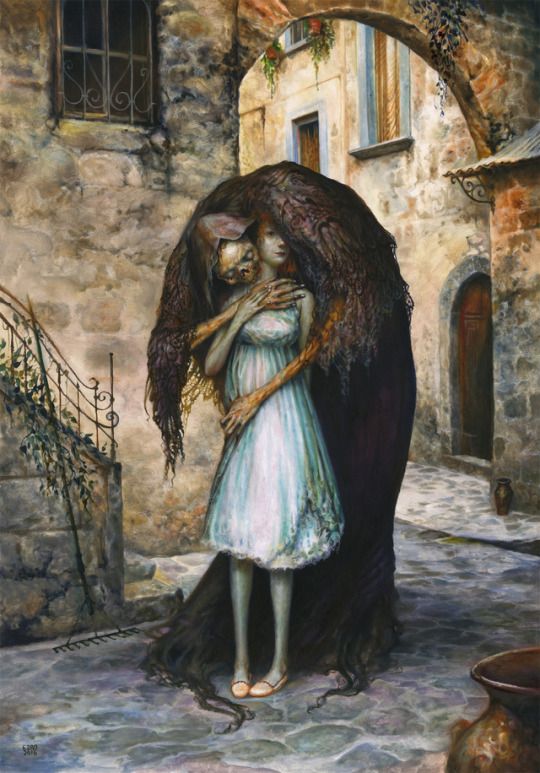Parenthood, Death and Continuance

October 3rd was the 34th anniversary of my grandmother's passing. I mark the date each year in my Outlook calendar with a small “+”, which only I understand. Usually, I take a moment to think of a few words of gratitude or reminisce for a few moments, but nothing more. There have been times when I have even forgotten to, but the mark remains in my diary like a tiny digital memorial.
This year, I decided to visit the site of her mother's grave. It has been a quarter of a century since I last went there. The cemetery has been an open space for as long as I can remember; the town has long since expanded around it, with most of the monuments having been removed by the council some forty or fifty years ago. The location of the burial is now covered in uncut grass as part of a micro-wildlife habitat.
My grandmother adored her mother, so it certainly felt an appropriate place to go to offer up a prayer for her. It must appear strange to the dog walkers and largely first-generation immigrant community in the area, to occasionally see people visiting old, unmarked graves in their urban park. Doubtless my standing there, hat in hand looking down at what to them is just grass, was no exception, and must appear slightly absurd. However, it did not matter to me. I thought about both women, their mother-daughter relationship, my grandmother's memories, and stories about her mother.
A recurring thought was my father's description of his grandmother's cooking; of her legendary Yorkshire puddings and roast onions. As I imagined her Edwardian Sunday dinners on that sunny early autumn lunchtime, I reflected on the life and mind that had once existed. I thought about my descent from both women, and how all their many descendants are spread about the world today. In England, America, and Australia. Yet without these two women none of those people would exist, and the world would be ever so slightly, if unnoticeably, different—the "butterfly effect".
A recurring thought was of these two women's sacrifice of energy and time raising their families. Those of us who are parents understand this, as the cost to us in terms of life resources and energy in raising children—both physical and mental—is enormous and all-consuming. By the time we have fulfilled that task, we are becoming old and our prime is past. Thus, although long dead and her vitality now gone from the remains in that soil, I recognized in my great-grandmother's life a continuation of something. Yet I cannot quite express in words what that 'something' actually is. If thoughts are living things, then the thoughts of the dead may be too? Although my great grandmother never left any mark of her existence for posterity, her years on earth were not spent in vain, nor were her energies squandered. They continue in an indissoluble and permanent chain of life from her to my own children.
The significance of motherhood is unparalleled. A new mother is heavily reliant on others, at least to a certain extent. This was especially true when my great-grandmother was a parent in the late Victorian and Edwardian era. Born in 1866, she passed away in 1948, yet is still remembered (just). Like all mothers her focus was on shaping her family's future, and I contemplated that connection. What links the living and the dead is similar to the cordeliers of the mystical path. This connection is biological in the sense that our ancestors' DNA lives on in us. Yet this cordelier also serves as the foundation for our cultural, educational and spiritual present, passed down to us by the dead. Just as there are no truly original ideas since thoughts are always built upon existing foundations, so our societal, religious, and moral values come - at least in part - from our forebears.
Proverbs 12:28 states, "In the way of righteousness is life, and in its pathway, there is no death." The path of parenthood is selfless, and may indeed be considered 'righteous' since it is conscious parenting that is willingly and freely given, expending energy and resources for the benefit of children. In that sense alone there is indeed no such thing as death. So, as we grow older, we may feel closer to a deceased loved one, as if the passage of time thins the veil between our world and theirs.
Cemeteries and burial places, whether ancient or modern, are often where people sense the presence of those who have passed. In Celtic mythology, "thin" places included sacred rivers, streams, bogs, caves, and trees – natural gateways to an underworld from above. Whether the Celts considered these places literal portals to the realm of the dead or metaphorical locations for them, and where elementals conveyed messages from one world to the other, is unclear. Nonetheless, I experienced a moment of connection as I stood in that open space where, beneath my feet, rests my grandmother's mother.
It is strange to think of death and parenthood simultaneously. The living life-givers visiting the lifeless life-givers. However, it is the natural way of things, and I was reminded of this during a recent walk to the Peak District with my nephew. For some reason, on this occasion I noticed the many gnarled, dead trees, weather-worn but invariably close to their living descendants on the landscape. It made me think about the duality of this world, where birth and death coexist in a strange marriage that is necessary for life to exist. Death is not the enemy of life but an integral part of it, like the shadow cast upon the living by the Sun.






